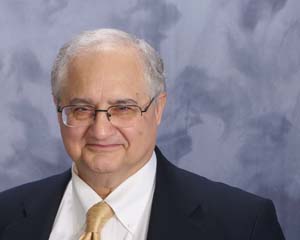Introduction to Distance Education: Theorists, and theories — Desmond Keegan
By: Dr. Farhad (Fred) Saba
Founder, DistanceEducator.com
Desmond Keegan holds a BA in Classical European Civilization from University College Dublin, and an MA from University College Dublin in Medieval European Civilization. His Post-Graduate studies in Education at the University of Adelaide culminated in writing his PhD thesis on The Theory and Practice of Distance Education. This doctoral theses was published by Croom Helm as Foundations of distance education in 1986. The second edition was published by Routledge in 1990 and the third edition followed in 1996. It was translated into Italian as Principi di Istruzione a Distanza (La Nuova Italia, Firenze) in 1994, into Chinese as Yuan Juli Jiao Yu Jichu (Central China TV University, Beijing) and chosen as a set text for the Open University of the United Kingdom’s MA in Open and Distance Education in 1997.
In his doctoral dissertation Keegan (1996) established the foundations of distance education as a distinct and separate area of practice and study from the main stream education. He stated:
“Distance education is coherent and distinct field of educational endeavor: it embraces programmes at a distance at primary and secondary, technical and further, college and university levels in both public and private sectors. It has existed for a hundred years and is to be found today in most countries (Page 12).
In addition, Keegan posed some of the foundational issues that are still outstanding and are subject of research, discuss, and controversy, and will remain so as long as distance education is an area of professional practice. These included:
- The role of “time synchronous technology” in virtual education as compared to time asynchronous technologies. At the time he posed this issue, distance education was primarily practiced as correspondence education, and therefore, it was an asynchronous endeavor. However, Keegan realized the emergence of electronic communication and the issues in research and practice that real time communication may bring to fore in the field.
- Access, equity and social impact of distance education as envisioned by another leading theorist of the field, Charles Wedemeyer, who conceptualized distance education as learning any time, any where.
- didactics or the skills learners and teachers required to use electronic technology for teaching and learning
- Market or the willingness of students to partake in “electronic classrooms” or use videoconferencing to engage in distance learning.
These issues led Keegan (1996) to believe that “distance education is a form of education fraught with problems for administrators, teachers, and students. It is characterized by the fragility of the non-traditional in education. These difficulties concern the quality, quantity and status of education at a distance. Good practice in distance education seeks to provide solutions for these inherent difficulties.” (Page 12)
More than two decades have passed since Keegan posited these foundational issues in distance education. Research in the field has grown tremendously since then, and we have found tentative answers to some of this issues. However, as Keegan thought, more studies are needed to explore these issues in support of the practitioners in the field.
In 1979 Dr. Keegan inaugurated the international journal Distance Education, now in its 35th year of publication. Distance-Educator.com follows this print publication regularly and highlights its research articles. Although not an open access journal, Distance Education was the first publication of its kind that focused on the field as a new area of scholarship.
REFERENCE
Keegan, D. (1996). Foundations of distance education (3rd Ed.) New York, NY: Routledge.









